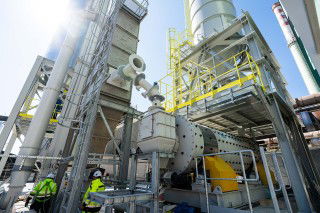This week, the Global Cement and Concrete Association (GCCA) and the United Nations held a webinar to discuss the ways in which infrastructure and concrete can contribute to the Sustainability Development Goals (SDGs).
The SDGs provide a blueprint for addressing challenges across a range of areas including clean water and sanitation, plastic waste reduction, sustainable cities, global warming and biodiversity. The global organisation sees the part played by businesses as an essential one, and today around 12,000 companies have signed up to it. Indeed, many leading CEOs believe engaging meaningfully with sustainability is essential if they are to build credible and lasting brands and grow revenues.
The cement and concrete industries can play their part by finding the best solutions for infrastructure development capable of delivering a greener future. "Concrete is central to achieving most if not all of these goals as it forms the backbone of infrastructure and underpins so much of the work," said Dinah McLeod, GCCA's CEO.
Infrastructure's impact on SDGs
Dr Scott Thacker, infrastructure specialist at the UN Office for Protection Services (UNOPS) reported that his organisation spends US$2.3bn annually in 80 countries on projects that are aligned with the Paris Agreement, New Urban Agenda, Sendai Framework for Disaster and the UN's 17 SDGs.
The SDGs set out 169 targets of how the world could develop into the future with many targets related in some way to infrastructure development. "We know that infrastructure is incredibly important for climate action and we know it’s incredibly important for responsible consumption," said Dr Thacker. "But it is important to know in which ways infrastructure affects SDGs."
"We are developing infrastructure on this planet at an unprecedented rate," said Dr Thacker. This is not least because of COVID-19 and the need for recovery of economies using infrastructure as an economic stimulus. "This represents a risk and an opportunity," said Dr Thacker. “The risks are clear, because infrastructure is so tied into sustainable development and because infrastructure is so long-lived, if we get infrastructure wrong there is a risk that we lock in unsustainable practices for decades into the future."
Influence of cement and concrete in achieving the SDGs
Dr Andrew Minson, concrete and sustainability construction director at the GCCA, spoke about how the association is aligning its methodology to the UN's SDGs. The GCCA has identified that concrete, as a material, directly and positively impacts 80 out of 169 targets.
The industry also recognises that its operations and business activities can have an adverse impact on some of the SDGs, for example, in areas such as health and safety and environment.
Equally, however, the industry has great potential to influence the success of the SDGs. "The continuation and extension of responsible extraction and production processes by the concrete and cement industry can make a positive impact towards nine targets out of 35 identified under environment and health and safety," said Dr Minson.
By understanding and making known the implications of responsible manufacturing practices the cement and concrete industry has a clear way forward. Representing 40 per cent of the world's cement and clinker production, GCCA members have already acted by signing up to the Sustainability Charter, which has five pillars, aligned with the guidelines.
The GCCA has also committed to achieving a climate ambition to deliver carbon-neutral concrete by 2050 and recognises the need for climate action to deliver many of the targets within the SDGs. The forthcoming industry roadmap, set to be released in 2021, will demonstrate how that can be achieved.
